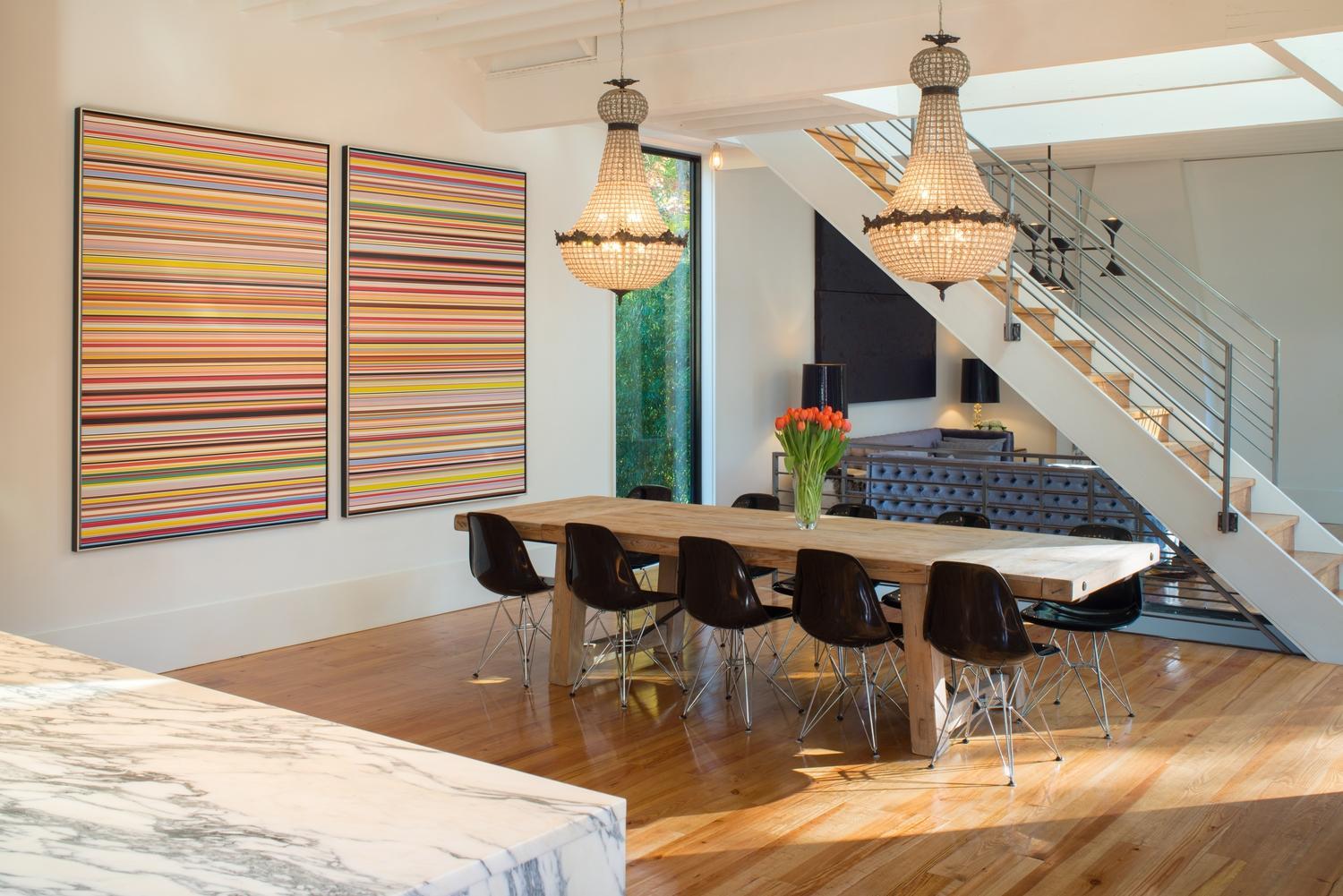A seasoned architect on renovating terrace houses and beyond
Carmel Greer, architect and owner of District Design in Washington DC, dishes our her best tips to renovate your house

Your support helps us to tell the story
From reproductive rights to climate change to Big Tech, The Independent is on the ground when the story is developing. Whether it's investigating the financials of Elon Musk's pro-Trump PAC or producing our latest documentary, 'The A Word', which shines a light on the American women fighting for reproductive rights, we know how important it is to parse out the facts from the messaging.
At such a critical moment in US history, we need reporters on the ground. Your donation allows us to keep sending journalists to speak to both sides of the story.
The Independent is trusted by Americans across the entire political spectrum. And unlike many other quality news outlets, we choose not to lock Americans out of our reporting and analysis with paywalls. We believe quality journalism should be available to everyone, paid for by those who can afford it.
Your support makes all the difference.Carmel Greer, architect and owner of District Design in Washington DC, renovated a home in the Shaw neighbourhood of the city.
Q: What is the biggest mistake you see homeowners making on a house renovation, especially those renovating for the first time?
A: I always suggest that clients focus on getting the overall plan and flow of spaces exactly right. Those are the things that are impossible to change with ease later. You can change a faucet, but a floor plan, not so much. Sometimes a client will be more focused on changing the finishes in a space rather than the space itself. If the kitchen is in the wrong place, changing the colour of the cabinets will go only so far. We also focus a lot on getting light into the middle of rowhouses [terraced houses]. Kitchens need cabinetry, which can block light, so sometimes the kitchen works best in the middle of the rowhouse.
Q: How do you maximise light, especially if there is a house on either side of it?
A: The Shaw house was an interior unit. The key is to be able to see light above and light ahead. To that end, we usually try to open up the stairwell or a portion of a floor so that light can stream down through a skylight. Opening up the rear of the house and maximising glass is also key. Even if you cannot add a lot of glass to the rear facade, just seeing a glimpse of the outdoors when you enter the home can make a big difference. This might require moving a wall or enlarging an opening.
Q: I live in a cooperative apartment building and want to renovate the bathroom. My project will involve bumping out a wall, moving the toilet, converting the shower and running a waterline from the bathroom through a bedroom and through an exterior wall to create an outdoor spigot for my terrace garden. Do I need an architect to plot this or can I make do with a contractor or a design/build firm? The board has to approve the work.
A: You will need a building permit, so you will need someone who can draw the scope of work. That does not necessarily need to be a full-fledged architect. Projects such as yours are hard because they used to be able to be accomplished with a reputable contractor or plumber and common sense, but now require real drawings. You may be able to draw this yourself, with graph paper and help from your local jurisdiction.
Q: We love our rambler, but we’d also love to update two bathrooms. We’d like to expand a kitchen and add a garage with storage and an upstairs suite. We’re also considering adding a second level or attic. Finally, we may need to update or replace the baseboard heating. Given that we live in a teardown neighbourhood, we are hesitant to sink too much money into it if it’s a future teardown. No matter how much value we add, it probably would not be worth as much as a new build in the neighbourhood. Do you have advice on where to begin with the decision of renovating, tearing down or moving? Should we engage an architect, a builder or a realtor?

A: This is a dilemma I hear very often. I don’t love tearing down a perfectly good house. That said, there is sometimes a real point of diminishing return. We are doing a new house where the teardown had a failing foundation and was coated in asbestos inside and out – that was an easier decision! I think the right answer will depend on how long you intend to live in the house. If you think you may need to move next year for work, you’ll need to approach things differently than if this is a “forever” home.
Q: I love the cabinets and island in the kitchen of the Shaw house. What is the maker of the pale wood cabinets, the space between the island and the base cabinets on both sides?
A: The cabinets are Brookhaven by Wood-Mode. The distance between the range and island is 42 inches; there is 5ft 7in between the back of the island and the back cabinetry. Forty-two inches is considered a minimum comfortable distance; we wanted to give a larger space to the area where the bar stools are because people tend to not always push in their stools.
Q: How do you know whether you are allowed to add a third floor to your house?
A: It depends greatly on where your house is, so it’s hard to generalise. In some zones, you are allowed to do this as a matter of right. If you are in a historic district, go get your neighbours a nice bottle of wine, because you will likely need their support. In the Shaw house, we were careful to ensure that the third-floor addition is not visible from the street.
Q: What type of backsplash was used in the kitchen?
A: It is a sheet of hammered copper. The clients originally wanted a colourful backsplash but couldn’t settle on a colour they wanted to live with for the long haul. Copper seemed like a great way to have a colour and texture without it quite being a ‘colour’ like red or blue. It will age and gain patina over time.
Q: We have a screened porch on the east side of our house. It has some old, low-pile carpet and a high ceiling that I’ve painted a light blue. Despite the brighter ceiling and a string of lights, it remains dreary. What do you suggest I do to make it more inviting?
A: We sometimes put skylights in porches. You could also replace the porch roof with a trellis, though that would not be nice in the rain. A less architectural option would be to use bright and intense colour for some of the furnishings or pillows.
Q: We moved into a modest condo with ugly green granite around the gas fireplace. Is there a way to resurface it (paint, tile, etc) instead of replacing the granite?
A: It’s almost always better to replace the surface you don’t like. If you paint over it, it will probably ultimately peel and chip. If the stone is polished, you could have it honed to tone it down.
Q: We redid our kitchen 12 years ago in a dark wood. The cabinets were custom and are of good quality. But the finish is rubbing off at the most common touch points and edges. Should they be replaced or refinished?
A: An excellent painter could repaint or refinish them. “Excellent” is the key word – it is tricky to repaint kitchen cabinets in a manner that will be durable.
Q: Where was the HVAC unit placed in the Shaw renovation? Because the renovation added another level, is there more than one system in the house?
A: This is something we work closely with the contractor on. In a house such as this, we do not want to waste an inch. In a four-story project, you should have a minimum of two zones, because heat rises. In this case, we divided the house into two zones, and a separate (and carefully located) HVAC unit serves each zone independently.
Q: Can you tell me the pros and cons of refrigerators that are counter depth versus more traditional fridges that seem to always stick out beyond counters?
A: I often tell clients that nothing good happens in the back six inches of a refrigerator. I prefer counter depth. The deep refrigerators look like behemoths, particularly when space is at a premium. I suggest a taller refrigerator instead.
Q: We’ve been considering taking down an interior wall to combine the kitchen and dining rooms for a larger, open-floor-plan and extra kitchen space. My one concern is that the workhorse part of the kitchen (sink, fridge and cooktop) would then be much closer to the main living area of the house. I worry about cooking smells, noises in the living room, etc. Are there any guidelines for determining whether this is too close for comfort? Should the couch and TV be a certain distance from the cooktop and appliances, for example?
A: I think it depends on how you live. If you are a somewhat messy cook, you may not want a fully open kitchen. You can achieve a sense of openness by having visual connections between rooms without taking all the walls down. I don’t think there is a rule of thumb – it’s more about your needs, habits and lifestyle.
Q: We live in a mid-1960s split-level home. Our entry has French doors, and we’re wondering whether it makes sense to replace them with a single door with sidelights. Also, we’d like a doorway that harks back to when our home was built. What’s a good style for the doorway?
A: You could do a big pivot door for a dramatic entry experience. I generally prefer a double door to a single door with sidelights. Depending on the vintage and style of your house, you could do something amazing and unexpected with the colour of your door, too. The great thing about a bold door colour is that it’s relatively easy to change the colour if you decide your choice no longer suits you.
© The Washington Post
Join our commenting forum
Join thought-provoking conversations, follow other Independent readers and see their replies
Comments